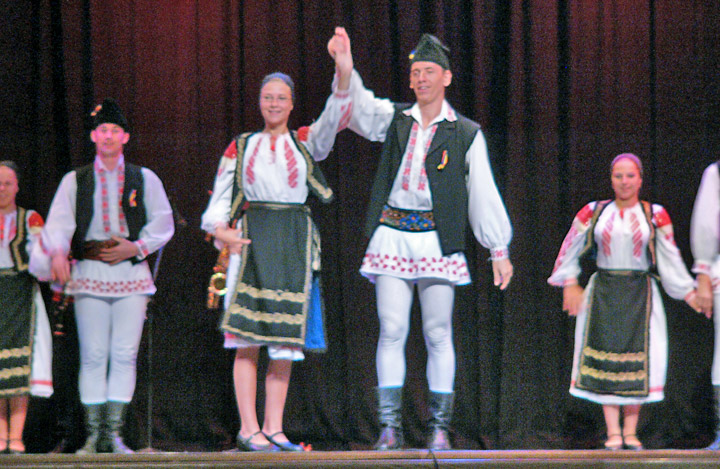

International Evening
Transilvania from Romania

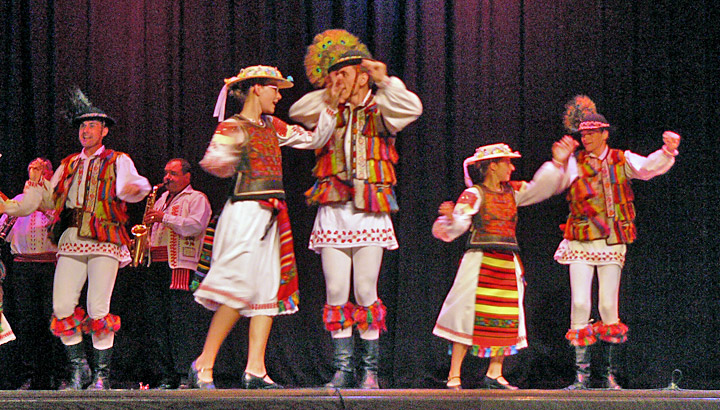
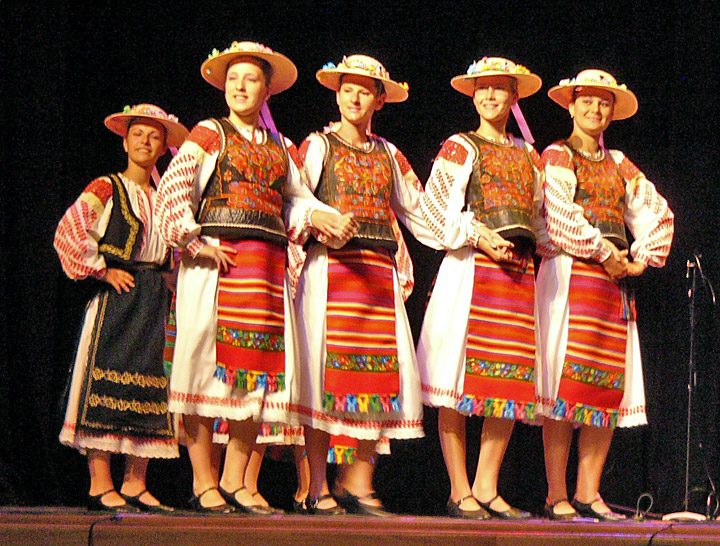
As the name suggests, Transilvania is from the Transylvania region of Romania. This group was organized in 1930 and has been well received all around the world. Transilvania hails from Cluj-Napoca, which has become a strong cultural and economic center of Romania. The location of Romania in the crossroads between Europe and Asia has made it culturally diverse.
Transilvania will present dances from several regions in the country. Dances from the Somes Valley show the customs brought by the Dacians and Romans. From southwest Romania, in the region of Oltenia, comes the “Calusarii” dance. This dance demonstrates the nature, temperament and character of this region. Dances from the Oltenia region are characteristic of the Danube plain with intricate steps.
Transilvania has appeared in recent years in Poland, Belgium, Germany, Cyprus, Italy, South Korea, as well as participating in U.S. festivals in Utah, Idaho & Chicago.
Itxas-Aide Dantza Taldea from Spain


Itxas-Alde Dantza Taldea, meaning “near the sea” is from Bakio in northeastern Spain. This region of Spain is known as the Basque Country. The group’s mission is to learn about and display traditional Basque dances and songs. The culture of the Basque region is different from Spanish and French culture even though the region occupies portions of both countries.
The dances performed by this group include many that are social dances of the Basque region, but also include ritual dances. Ritual dances are those that might be to recognize a special date or a special city or town. Interestingly, in the ritual dances, the dancers always carry objects in their hands. In these dances, the men usually jump about more than the women, with the women focusing their dance on soil.
The group has traveled and participated in festivals in many other countries including Portugal, France, Catalonia, Russia, Turkey, Italy, Argentina, Bulgaria, Scotland, Poland, Costa Rica and Hungary. Since 1991, Itxas-Alde Dantza Taldea has hosted an international festival in Bakio.
Bursa Sward & Shield Dance Group from Turkey

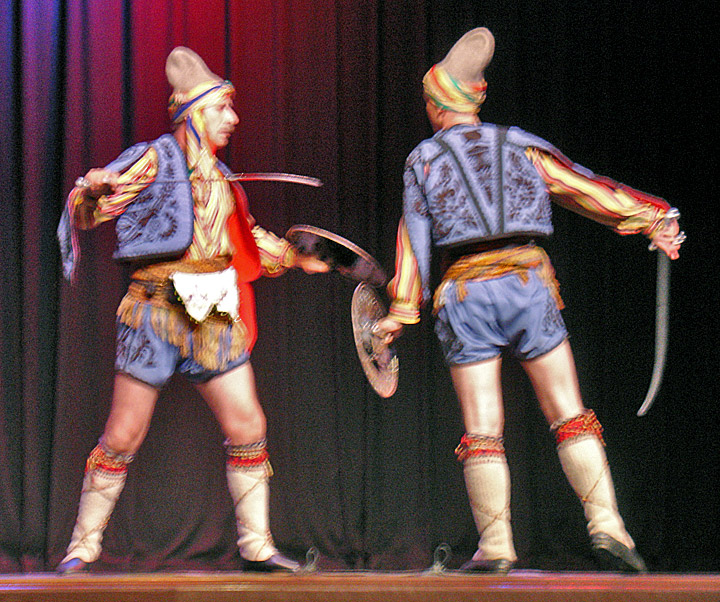
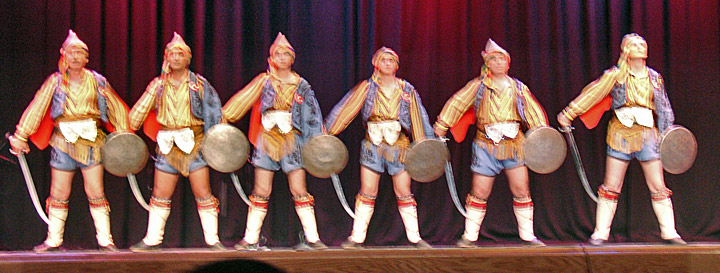
Appearing at Folkmoot for the first time since 1984, the Bursa Sword and Shield Dance Group espouses the belief that folk dances performed at festivals help develop friendships among different cultures. This is the reason the group continues to perform its dances at folk festivals worldwide.
At first, the sword-shield dance was performed by soldiers as part of their training. The main idea of the dance was that “even in war, honesty is very important and, at the end, peace always wins.” In recent times, the sword-shield dance is performed in the celebration of historical days, weddings, for visits of foreign dignitaries and in international folk dance festivals.
In the folk dance world, the sword-shield dance is one of very few dances performed without music. it derives its rhythm, tempo and unity from the sound of swords and shields that hit one another. Great attention is paid not to change the original format of the figures and the costumes, which are made of 11 pieces.
Wahana Cipta from Indonesia


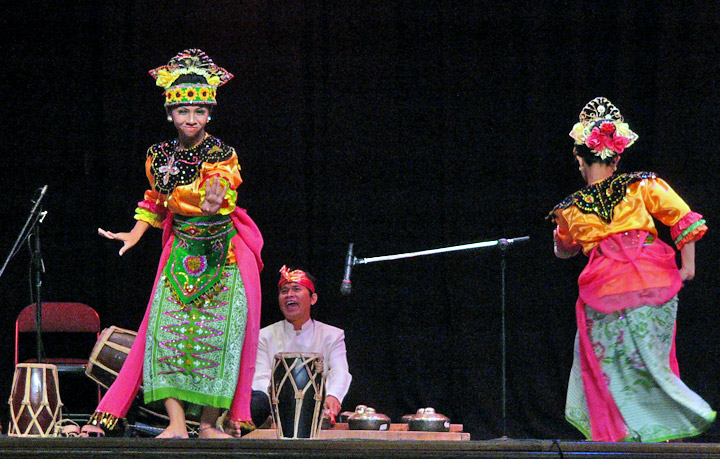
More than 18,000 islands comprise Indonesia, making it a very culturally diverse nation. The island spirit has kept traditional music and dances alive, and Wahana Cipta Group will share that culture at Folkmoot this year.
Wahana Cipta is based in Indonesia’s capital of Jakarta on the
island of Java. In addition to Java, Wahana Cipta’s repertoire includes
dances from Sumatra, Bali and other islands. Of particularly poignant interest
this year will be “Tan Saman Seudati,” which depicts the togetherness and
harmony of teenagers in the Tsunami-devastated area of Aceh on the island of
Sumatra. This is a very dynamic number with vocal accompaniment.
The group has a mission of increasing the exposure of Indonesian culture in theatre, music and dance and maintaining that positive exposure. The group also wants to benefit the world through relationships in cultural exchange.
Wisla from Poland

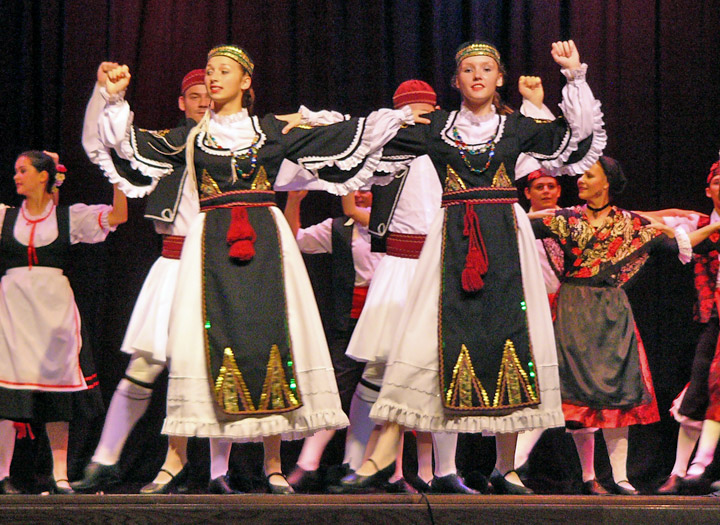
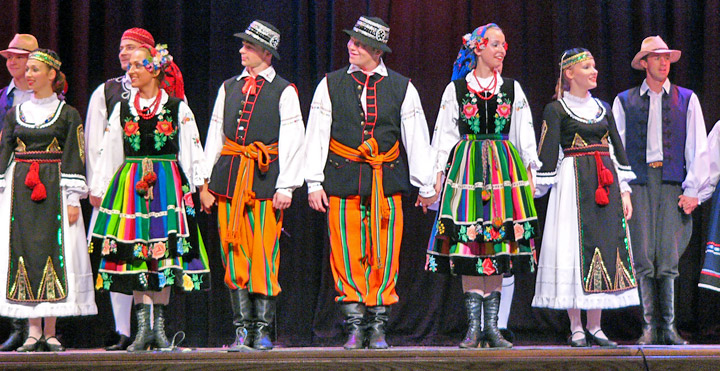
Wisla, from the city of Plock, was founded in 1995, and, thanks to experienced teachers, it has quickly reached a high artistic level. The group is arriving at Folkmoot from a Sister Cities event in Fort Wayne, MD., where performers are appearing this year for the third time since 1996. In addition, Wisla participated in the Millennium Celebration at Walt Disney
World in 2000, and members have also taken part in Festivals in
Belgium. Italy, France, Serbia and Latvia in recent years. Wisla is named for a
river that flows hometown. Its artistic program is based on Polish folklore and
traditional Polish dances and music. In addition to presenting Polish
traditions, Wisla has prepared a special feature named “European Fantasia” this
year. This celebrates Poland’s recent entry into the European Union and is
intended to capture the spirit of European unity, which, in turn, is expected to
help pave the way for world peace and harmony.
Vektors from Latvia

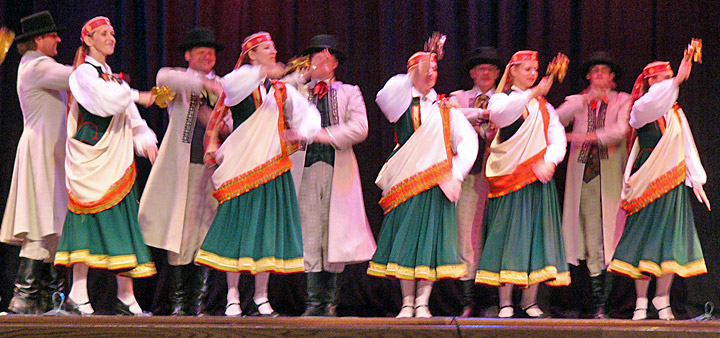
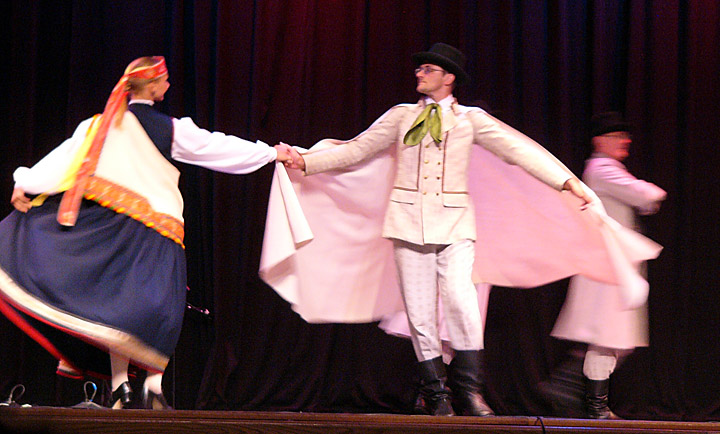
The dance group Vektors is from Riga, the capital city of Latvia, where about half of the country’s population lives. The group was founded in 1958, and is associated with the Riga Technical University, the oldest university in Latvia. Association with the University provides a strong student presence in the group.
Every dance that Vektors performs is based on the musical and choreographic folk materials of each of the four cultural and historical regions of Latvia. The dances are performed in the costume of the particular region. Each costume is trimmed with distinct ornaments, color design and is worn in a special manner.
The main characteristics of the Latvian dances as performed by Vektors are dance ornaments, performance manner and the relationship of dance partners. Latvian dances are rooted in pairs of dancers — solo dances are a rarity. Uldis Stems has been the artistic leader of Vektors since 1960. This consistent leadership has made Vektors one of the premier amateur art ensembles in Latvia. Stems relates an interesting sidelight to the history of Vektors: in the 45-year history of the group, 36 couples have married after becoming acquainted as a result of membership in the group!
Vektors has performed in recent years in France, Czech Republic, Norway and Germany, in addition to its home country of Latvia. Since its founding, Vektors has given more than 2,000 performances around the world.
Yeksad from Northern Cyprus
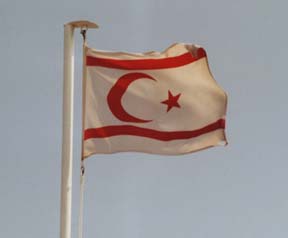
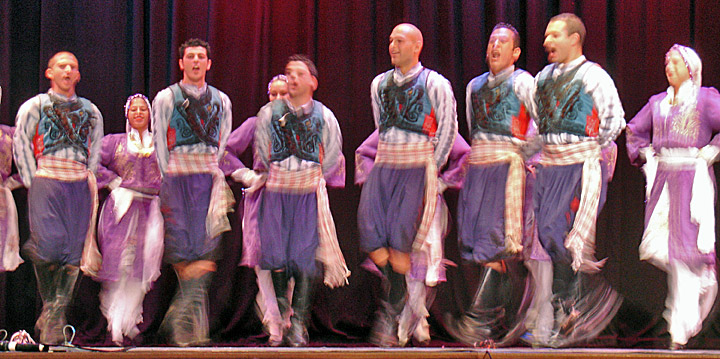
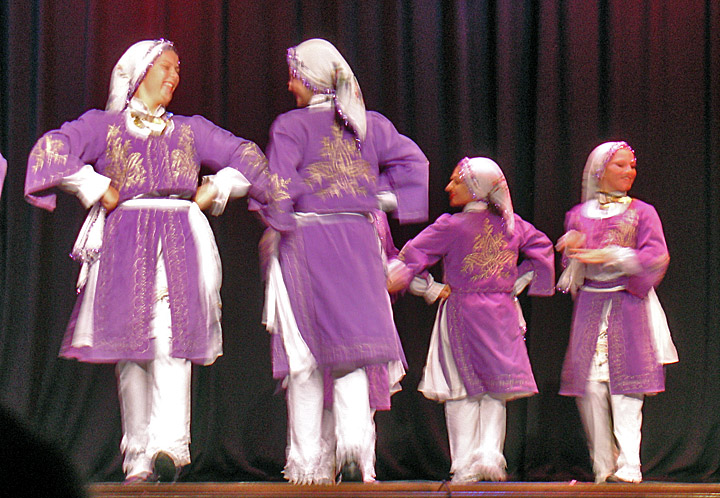
In English, YEKSAD stands for the Yenibogazici Culture, Art and Environment Association. The aim of the association is to keep the customs and traditions of its region of Cyprus alive and to introduce them to new generations. The association is comprised of four folk dance groups, an adult chorus and an orchestra of young students. Other branches of the association include the Environment Committee, Sports Committee and Public Relations and Media committees. The YEKSAD folk dance group was formed in 1996 with 24 junior members and has grown to include more than 150 members in various groups. The groups are professionally trained under the guidance of one senior and six assistant trainers, with six accompanying musicians.
The first juniors of the 1996 YEKSAD folk dance group are today’s seniors and have become a widely known group all over Cyprus and Turkey, as well as in the United Kingdom. Almost all of the senior group members participating in Folkmoot are university students or recent university graduates.
The 34-member YEKSAD group traveled to Folkmoot from Famagusta, Cyprus, by way of Canada, where members participated in the well-known Drummondville Festival. During Folkinoot, the group will present its traditional dances such as Kartal (Eagle), Orak (Sickle), Nisan and Kozan (Engagement).
Empi et Riaume from France

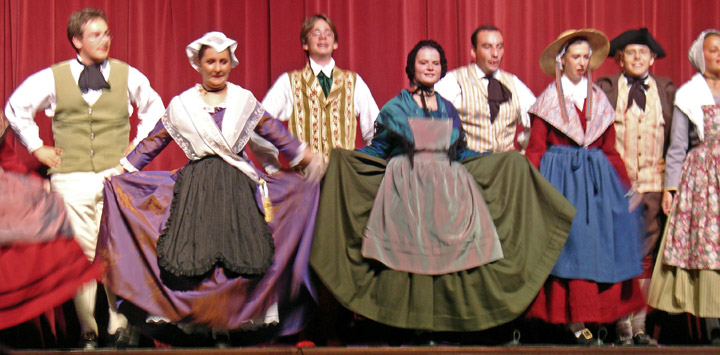

(video may take some time to load)
As boatmen sailed down the Rhone River in France, they would shout “Empi” or “Riaume” specifying the Kingdom of France on one bank and the Holy Roman Empire on the other. It is from this tradition that this year’s group from France draws its name.
In rural festivals where music was not available, dancers performed to the sound of their feet and were accompanied by singers. However, hearing a flute, oboe, or clarinet accompanied by a bass rhythm was also common. During the Middle Ages, the hurdy-gurdy, the bagpipe, button accordion and piano accordion were introduced and soon replaced the village orchestra. The violin is also a traditional folk instrument. Empi et Riaume tries to capture the period of the French hierarchal rural society of the Dauphiné and Vivarais areas.
Empi et Riaume also brings the traditional crafts of French lace making and embroidery to Folkmoot 2005. Group Director Anne Marie Ciolfi will share her expertise in French lace making and embroidery in a series of workshops during this year’s festival.
Tahoungan from Togo

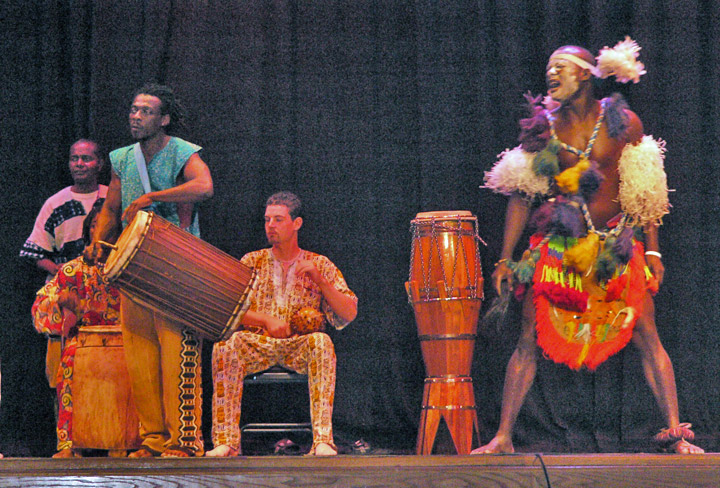

With a name that means “Two Tall Drums” in English. it is no surprise that this year’s group representing logo will depend on strong rhythms for its dances. The rhythms will be slow and fast, soft and loud, intense and calm. The sound of the dancers’ feet along with the drums, all made by group members, provide an exciting and energizing performance.
“Tahoungan” will perform dances from both northern and southern logo. A dance called “Atina” is a ceremony dance from southern logo that calms the thunder. The group also portrays a fire-eating dance from voodoo heritage.
As a new treat this year, group leader Joe Amouzou will be teaching a series of drumming workshops during the festival. The community will get a chance to learn more about logo and about drumming and drum making at these workshops.
Danzdeel Salzkotten from Germany


Danzdeel Salzkotten, from Salzkotten, Germany, was founded in 1971. In the group’s local dialect, its name means “a place to dance.” Group members believe that traditional music and dance should not be a thing of the past and for that reason, they dance and share the culture of Germany, not only in their home country but also by traveling. Danzdeel Salzkotten is, in fact, a well-traveled group having participated in the past in festivals in Ireland, Portugal, Belgium, Israel, England, Scotland, France, Hungary, Czech Republic, Poland and Latvia. During the local festivals in Salzkotten, Danzdeel hosts its foreign visitors in local homes to further enhance cultural exchange.
Most of Danzdeel Salzkotten’s songs and dances are from the Pomerania and Westphalia areas of northern Germany. The women make their own costumes in accordance with traditions from a village near the Baltic coast. One of the group’s dances depicts the life of a drunken sailor, while another shows the weaving of a tapestry, and another illustrates a young boy trying to win a girl away from another boy — of course, a fight ensues.
Vycpaiek Ensemble from Czech Republic

